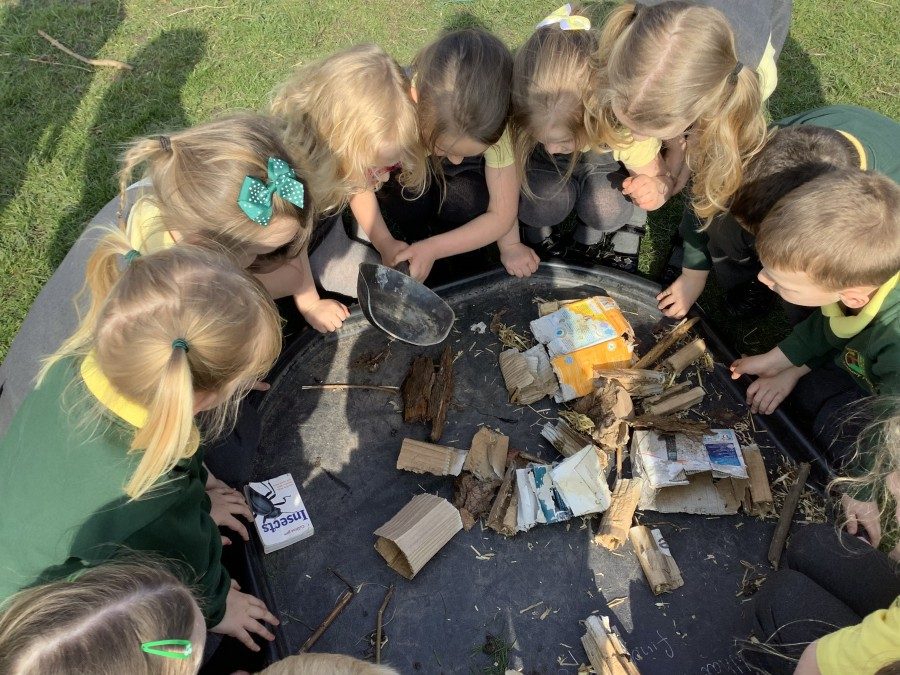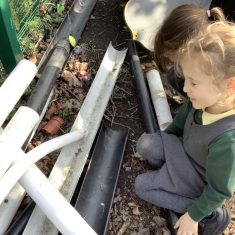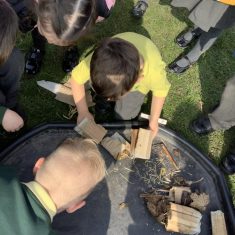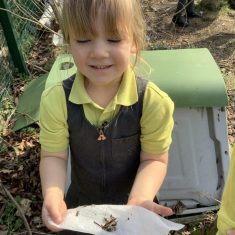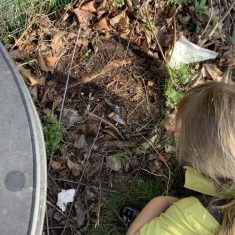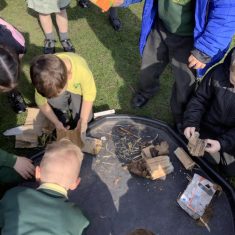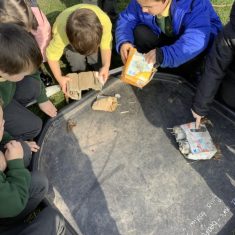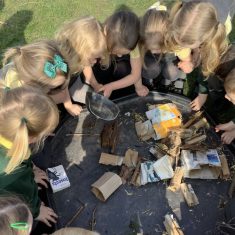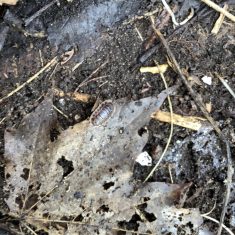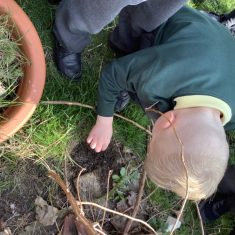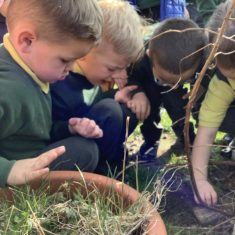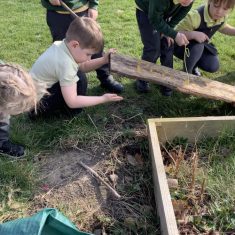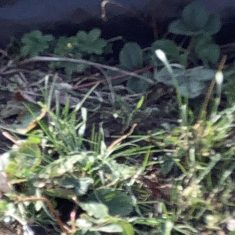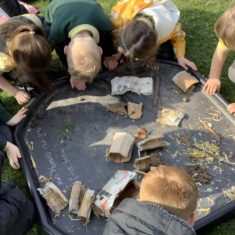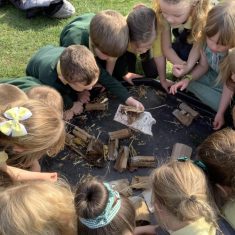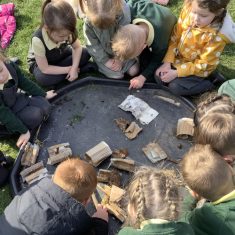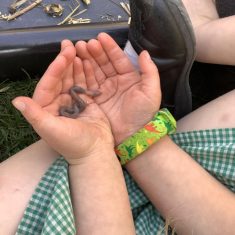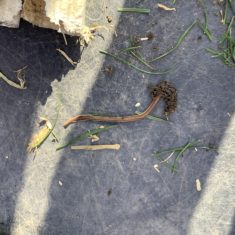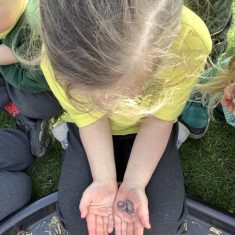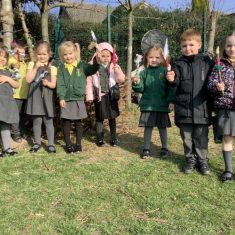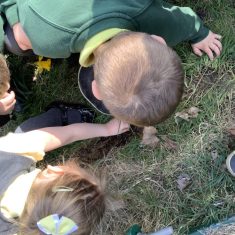Reception children went on a mini-beast hunt in our Forest School. They started by trying to find dark places the bugs might hide. Our Forest School environment is scattered with strategically placed materials to encourage a variety of creepy crawlies to make their homes. The stacked pipes were a good starting point and the first wood lice were found.
The children could bring any finds back to a sorting tray, where they observed the creatures and tried to find the names in an identification books. Some interesting finds, millipedes, centipedes, woodlice and pill bugs, spiders, a beetle, baby slugs (no big ones) empty snail shells (but no live ones) and worms. Lots of discussion about what we didn’t find, such as earwigs and surprisingly no ladybirds today, though we have seen a few this year.
The children were really engrossed, the most exciting find was a New Zealand flat worm. Generally seen as a bit of a pest because they eat our rather useful earth worms. Fascinating to watch however, at first they can appear as a slimy blob but watch as they extend out to their full length and raise their “heads” as they appear to look around.
The children also went to our extensive but hotel, emptying a room at a time, carefully unwrapping the contents to find baby bugs tucked up in the small folds of the cardboard. The children had some interesting discussions, do different bugs communicate with each other? Is there one language for different worms? They tried to race the slugs but the spectators soon got restless and went off in search of more dynamic beasts. A very lively afternoon.
Principle 2: Forest School takes place in a woodland or natural wooded environment to support the development of a relationship between the learner and the natural world.
Article – We all have the right to say what we think and be listened to.
- A flat worm stretching itself out.
- some children made journey sticks to take home.
